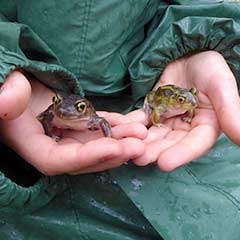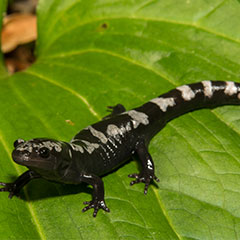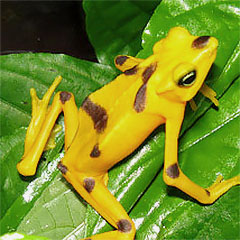Amphibian Conservation
Amphibians are truly incredible animals. Their young can breathe water through gills while adults breathe air on land; some adult amphibians are even lungless, getting all the oxygen they need through their skin. All amphibians can breathe through their skin to some degree, and they need to keep this delicate tissue moist in order to survive. Their dependence on clean water and sensitivity to chemicals absorbed through their skin makes amphibians good “ecological indicators” - when something goes wrong in the environment, amphibians are often one of the first to show signs of trouble. That makes protecting our local amphibians a win-win scenario for amphibians and humans alike!
Eastern Spadefoot Toads
Since 2009, we've worked with Mass Audubon to restore these toads to their former range by designing and building vernal pools and headstarting toads for reintroduction to the wild.
Marbled Salamanders
We've begun the first marbled salamander reintroduction project in Massachusetts, bringing these amphibians back to Metro-Boston.
Panama Amphibian Rescue and Conservation Project
Zoo New England is saving frogs from near-extinction due to a deadly fungus.




